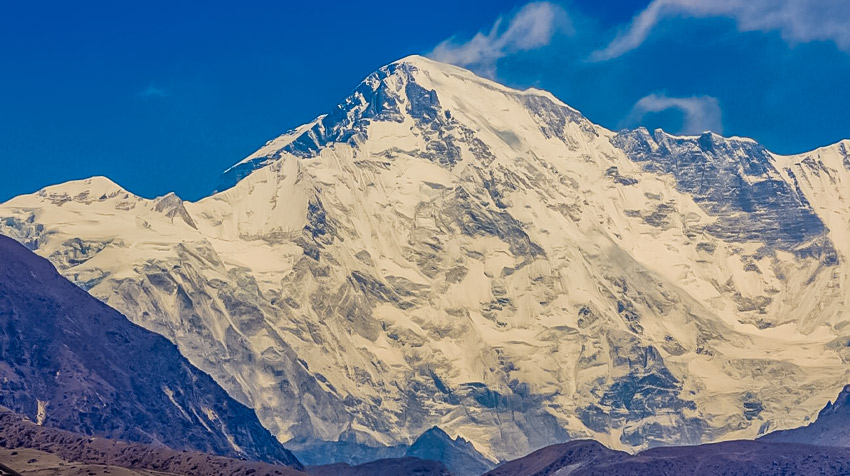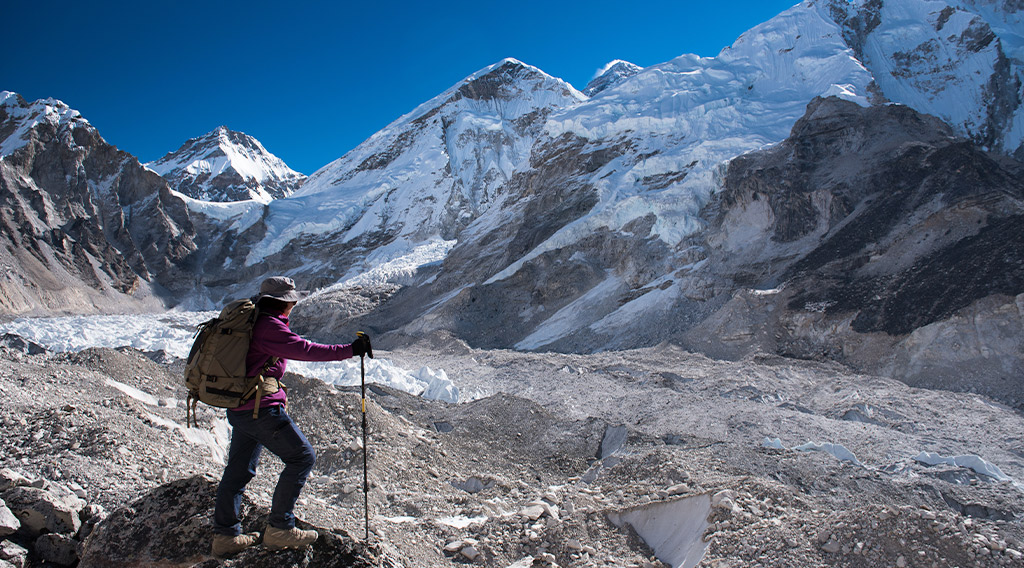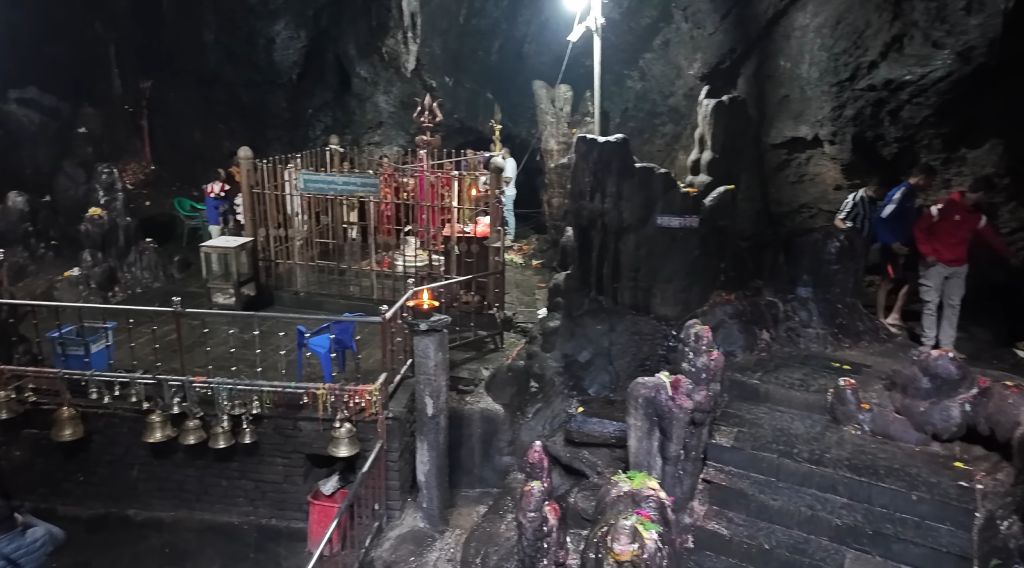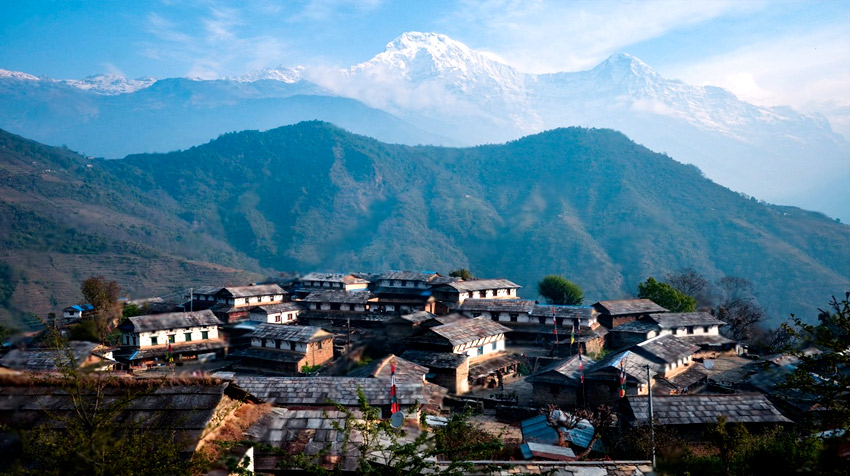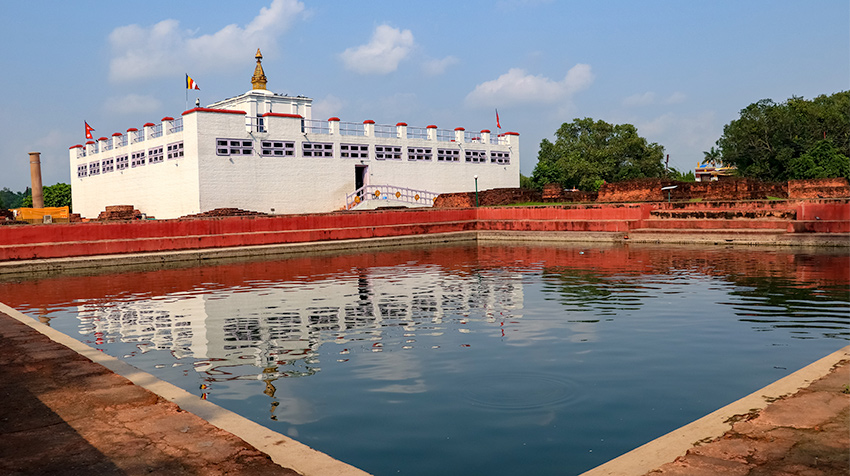Annapurna Base Camp Trek: Unforgettable Adventures in the Himalayas
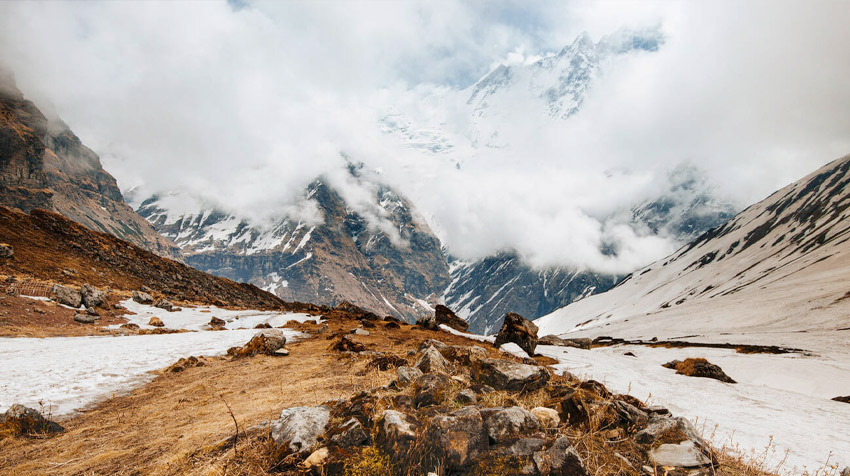
The Annapurna Base Camp trek is situated in the magnificent Himalayas and provides incomparable adventures and stunning natural beauty. Throughout this remarkable journey, you will encounter snow-capped peaks, verdant forests, and picturesque traditional villages. It is a must-do experience for adventure enthusiasts and nature lovers.
With its diverse landscape and terrain, this trek is perfect for seasoned hikers and those looking to challenge themselves. From the mystical Machapuchare (Fishtail) Mountain to the iconic Annapurna South, the awe-inspiring views will leave you in awe.
Immerse yourself in the rich cultural heritage of the Himalayas as you pass through traditional Gurung villages and encounter friendly locals. Experience their warm hospitality, savor local delicacies, and gain insights into their way of life.
Whether seeking an adrenaline rush or simply craving a serene escape, the Annapurna Base Camp trek promises the adventure of a lifetime. Lace up your boots, pack your sense of adventure, and prepare to create memories that will last a lifetime in the majestic Himalayas.
Why choose Annapurna Base Camp Trek for your adventure
The Annapurna Base Camp trek is a dream come true for adventure seekers. With its diverse landscape and terrain, the Annapurna Base Camp trek offers a unique and unforgettable experience. Whether you're an experienced hiker or a novice looking to challenge yourself, the Annapurna Base Camp trek has something for everyone.
One of the main reasons to choose this trek is the stunning natural beauty you'll encounter along the way. From the mystical Machapuchare (Fishtail) Mountain to the iconic Annapurna South, the awe-inspiring views will leave you in awe. The trek takes you through lush forests, sparkling rivers, and picturesque valleys, offering a feast for the eyes at every turn.
Another reason to choose the Annapurna Base Camp trek is the opportunity to immerse yourself in the rich cultural heritage of the Himalayas. As you pass through traditional Gurung villages, you'll have the chance to interact with friendly locals and experience their warm hospitality. You'll also get to savor local delicacies and gain insights into their way of life, making this trek a truly enriching cultural experience.
Best time to go on Annapurna Base Camp Trek
Planning your trek at the right time ensures a successful and enjoyable experience. The best time to go on the Annapurna Base Camp trek is during the spring (March to May) and autumn (September to November) seasons. These months offer stable weather conditions, clear skies, and moderate temperatures, making it ideal for trekking.
During spring, the trekking trails come alive with vibrant rhododendron blooms, creating a breathtaking spectacle. The autumn season, on the other hand, offers crystal clear views of the majestic Himalayan peaks. Both seasons provide a comfortable trekking experience, with mild temperatures during the day and cool nights.
It's essential to avoid the monsoon season (June to August) as the trails can become slippery and prone to landslides. Winter (December to February) is also not recommended due to heavy snowfall and frigid temperatures. Trekking during these seasons can be challenging and dangerous, so it's best to plan your trip accordingly.
Planning and preparation for the trek
Proper planning and preparation are essential for a successful and enjoyable trekking experience in the Annapurna region. Here are some key factors to consider before embarking on the Annapurna Base Camp trek:
Physical Fitness: The Annapurna Base Camp trek is moderate to difficult, so it's important to be physically fit and prepared for long days of walking. In your fitness routine, prioritize cardiovascular exercises, strength training, and endurance-building activities.
Acclimatization: Altitude sickness is a common concern during high-altitude treks. Proper acclimatization is important to avoid health issues. Plan for rest days at higher altitudes and ascend gradually to allow your body to adjust to the altitude.
Permits and Documentation: Obtain the necessary permits and documentation for the trek. This includes the Annapurna Conservation Area Permit (ACAP) and the Trekkers' Information Management System (TIMS) card. These permits can be obtained in Kathmandu or Pokhara.
Trekking Gear: Invest in good-quality trekking gear, including sturdy hiking boots, waterproof clothing, a comfortable backpack, trekking poles, and a sleeping bag. Packing lightweight but warm clothing layers is essential to adapt to changing weather conditions.
Guides and Porters: While trekking independently is possible, hiring a guide or porter can enhance your trekking experience. They can provide valuable insights, support, and assistance throughout the journey.
Insurance: Comprehensive travel insurance that covers emergency medical evacuation, trekking-related injuries, and illnesses is crucial. Check the policy coverage and ensure it includes high-altitude trekking.
Considering these factors and making the necessary preparations, you'll be well-equipped to embark on the Annapurna Base Camp trek and have a safe and memorable adventure.
Highlights of the Annapurna Base Camp Trek
The Annapurna Base Camp trek is filled with breathtaking highlights that will leave you in awe. Here are some of the must-see attractions and experiences along the trek:
Machapuchare Base Camp: Located at 3,700 meters, Machapuchare Base Camp offers stunning views of the iconic Fishtail Mountain. The jagged peaks, surrounded by glaciers and snowfields, create a mesmerizing sight.
Annapurna Base Camp: The ultimate destination of the trek, Annapurna Base Camp sits at 4,130 meters. Standing amidst towering peaks, including Annapurna I, the 10th-highest mountain in the world, is a humbling and awe-inspiring experience.
Gurung Villages: The trek takes you through traditional Gurung villages, such as Ghandruk and Chhomrong, where you can immerse yourself in the local culture. Explore the narrow streets, visit ancient monasteries, and interact with the friendly locals to gain insights into their way of life.
Hot Springs: After days of trekking, treat yourself to a relaxing dip in the natural hot springs of Jhinu Danda. The therapeutic waters provide a soothing respite for tired muscles and offer a unique experience amidst the natural surroundings.
Sunrise at Poon Hill: Before reaching the base camp, make a detour to Poon Hill, a popular vantage point for panoramic sunrise views. Wake up early and hike to Poon Hill to witness the golden hues illuminating the Annapurna range, creating a magical moment.
These are just a few of the many highlights of the Annapurna Base Camp trek. Each day offers new and awe-inspiring sights, making it an unforgettable adventure.
Trekking routes and itinerary options
The Annapurna Base Camp trek can be completed using various routes and itinerary options, depending on your preferences and time constraints. Here are some popular routes and itineraries:
Standard Route (via Ghorepani Poon Hill): This is the most popular and well-established route for the Annapurna Base Camp trek. Before reaching the base camp, the trek starts from Nayapul and passes through picturesque villages like Tikhedhunga, Ghorepani, and Tadapani.
Jhinu Danda Route: This route detours towards Jhinu Danda after Tadapani, allowing trekkers to enjoy the natural hot springs before continuing to the base camp.
Mardi Himal Route: The Mardi Himal route is an excellent option for those looking for a more off-the-beaten-path experience. It offers stunning views of Mardi Himal and Machapuchare and can be completed shorter than the standard route.
Short Itinerary: If you have limited time, shorter itineraries that cover the trek's highlights are available. These shorter itineraries typically involve flying to Pokhara and starting the trek from there, cutting down on the initial trekking days.
Choosing a route and itinerary that suits your fitness level, time constraints, and preferences is essential. When planning your itinerary, consider factors such as the duration of the trek, daily walking distances, and acclimatization days.
Accommodation and facilities along the trek
The Annapurna Base Camp trek offers accommodation options to suit every budget and preference. Along the trekking route, you'll find tea houses, also known as lodges, which provide basic but comfortable accommodation for trekkers.
Tea houses typically offer private or shared rooms with simple bedding and shared bathrooms. Some tea houses may also have hot showers, while others provide bucket showers. It's important to note that the higher you ascend, the more basic the facilities become.
Most tea houses also have a communal dining area where trekkers can enjoy meals. The menu at tea houses includes a variety of dishes, ranging from local Nepali cuisine to international options. Try the local dal bhat, a traditional Nepali meal consisting of rice, lentil soup, and various curries.
In recent years, some tea houses have also started offering amenities such as Wi-Fi and charging facilities for electronic devices. However, it's important to note that these amenities may only be available or reliable in some tea houses, especially at higher altitudes.
Safety tips and precautions for the trek
While the Annapurna Base Camp trek offers a thrilling adventure, it's essential to prioritize safety and take necessary precautions. Here are some safety tips to keep in mind:
Acclimatize Properly: Altitude sickness is a common concern during high-altitude treks. Ascend gradually, take rest days at higher altitudes, and listen to your body. If you experience symptoms such as headache, dizziness, or nausea, descend to a lower altitude and seek medical attention if necessary.
Stay Hydrated: It's important to stay hydrated throughout the trek. Drink plenty of water and avoid alcohol and caffeine, as they can contribute to dehydration. Carry a reusable water bottle and use water purification tablets or filters to ensure safe drinking water.
Follow Trekking Etiquette: Respect the local culture and customs by following trekking etiquette. This includes being polite to locals, avoiding littering, and refraining from loud or disruptive behavior. Leave no trace by disposing of waste responsibly and carrying out any non-biodegradable items.
Be Prepared for Weather Changes: The weather in the mountains can be unpredictable, with rapid changes in temperature and weather conditions. Pack and dress in layers to adapt to changing weather, and carry a waterproof jacket and pants to protect against rain or snow.
Stay Connected and Informed: Inform a reliable person back home of your trekking plans and stay connected through a reliable mobile network or satellite phone. Keep up-to-date with weather forecasts and trail conditions to make informed decisions during the trek.
Following these safety tips and precautions can minimize risks and ensure a safe and enjoyable trekking experience in the Annapurna region.
What to pack for the Annapurna Base Camp Trek
Packing the right gear and essentials ensures a comfortable and successful trek in the Annapurna region. Here's a comprehensive packing list to help you prepare:
Clothing: Pack lightweight, moisture-wicking, and quick-drying clothing for the trek. Include thermal base layers, trekking pants, fleece jackets, down jackets, waterproof jackets, hats, gloves, and socks. Remember to pack a good pair of hiking boots and sandals for resting at tea houses.
Trekking Gear: Essential trekking gear includes a comfortable backpack, poles, a sleeping bag suitable for cold temperatures, a headlamp with extra batteries, a water bottle, and a water purification system.
Personal Items: Carry toiletries, sunscreen, lip balm, wet wipes, a quick-drying towel, a first aid kit with essential medications, insect repellent, and personal hygiene products. It's also recommended to bring a portable charger or extra batteries for electronic devices.
Miscellaneous: Remember to pack a camera or smartphone to capture stunning landscapes and memories. Consider also carrying a guidebook or maps, a trekking permit, a money belt to keep valuables safe, and a small lock to secure your belongings.
Packing light and carrying the essentials is vital to avoid unnecessary weight on the trek. When choosing your gear and clothing, prioritize comfort, functionality, and versatility.
Conclusion: An unforgettable experience in the Himalayas
The Annapurna Base Camp trek is a journey of a lifetime that offers unforgettable adventures and breathtaking natural beauty. Every step of the trek is filled with awe-inspiring sights, from the snow-capped peaks to the lush valleys.
Immerse yourself in the rich cultural heritage of the Himalayas as you pass through traditional villages and interact with friendly locals. Challenge yourself physically and mentally as you conquer the terrain and reach the base camp.
Whether seeking an adrenaline rush or simply craving a serene escape, the Annapurna Base Camp trek promises the adventure of a lifetime. Lace up your boots, pack your sense of adventure, and prepare to create memories that will last a lifetime in the majestic Himalayas.
Embark on the Annapurna Base Camp trek and let the beauty of the Himalayas captivate your soul.


